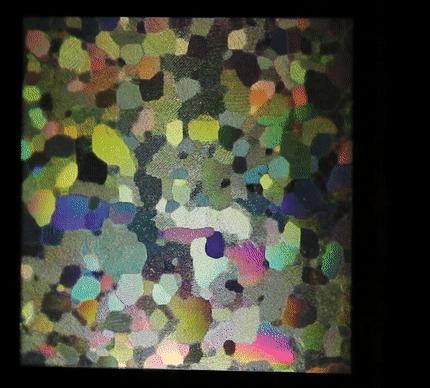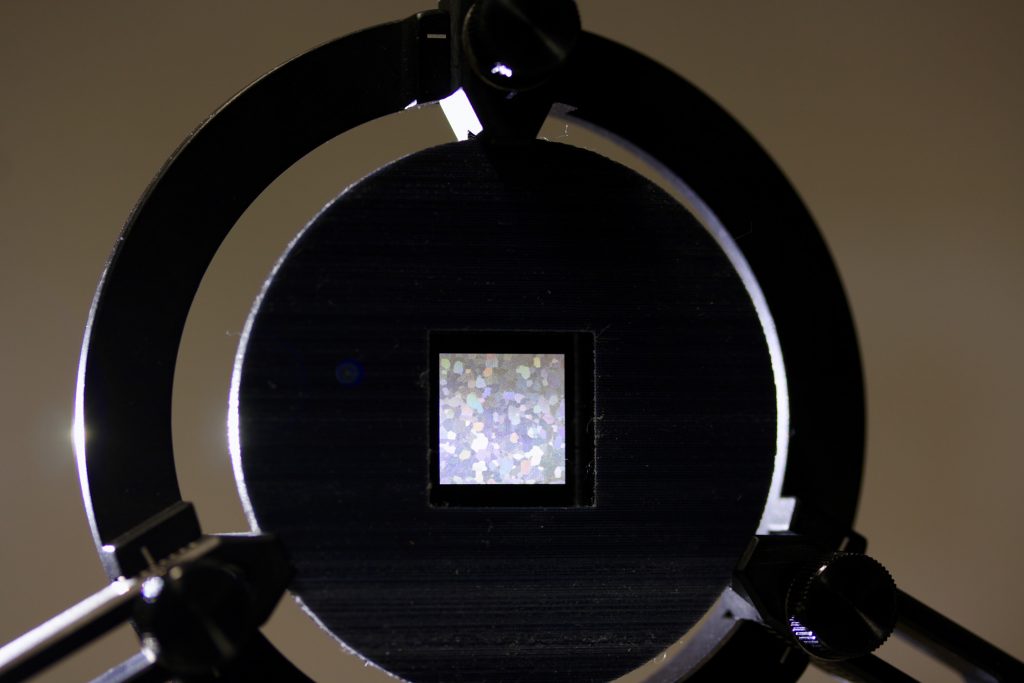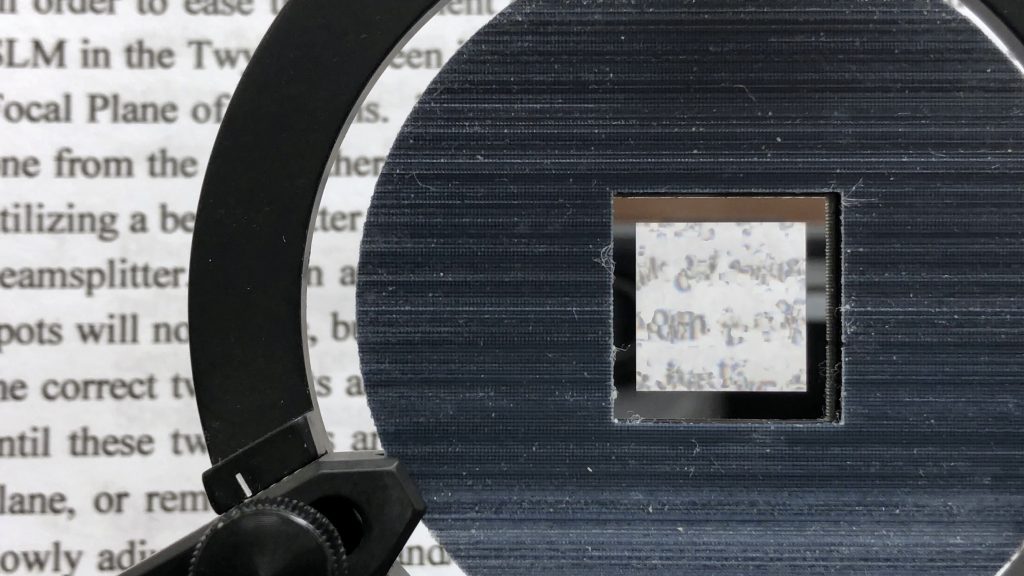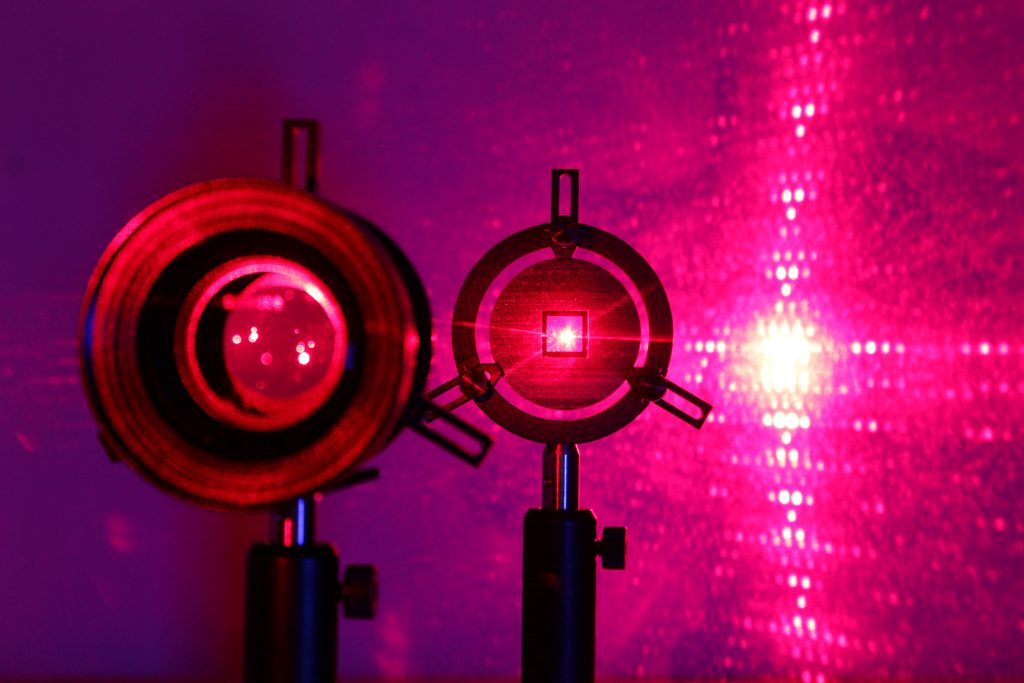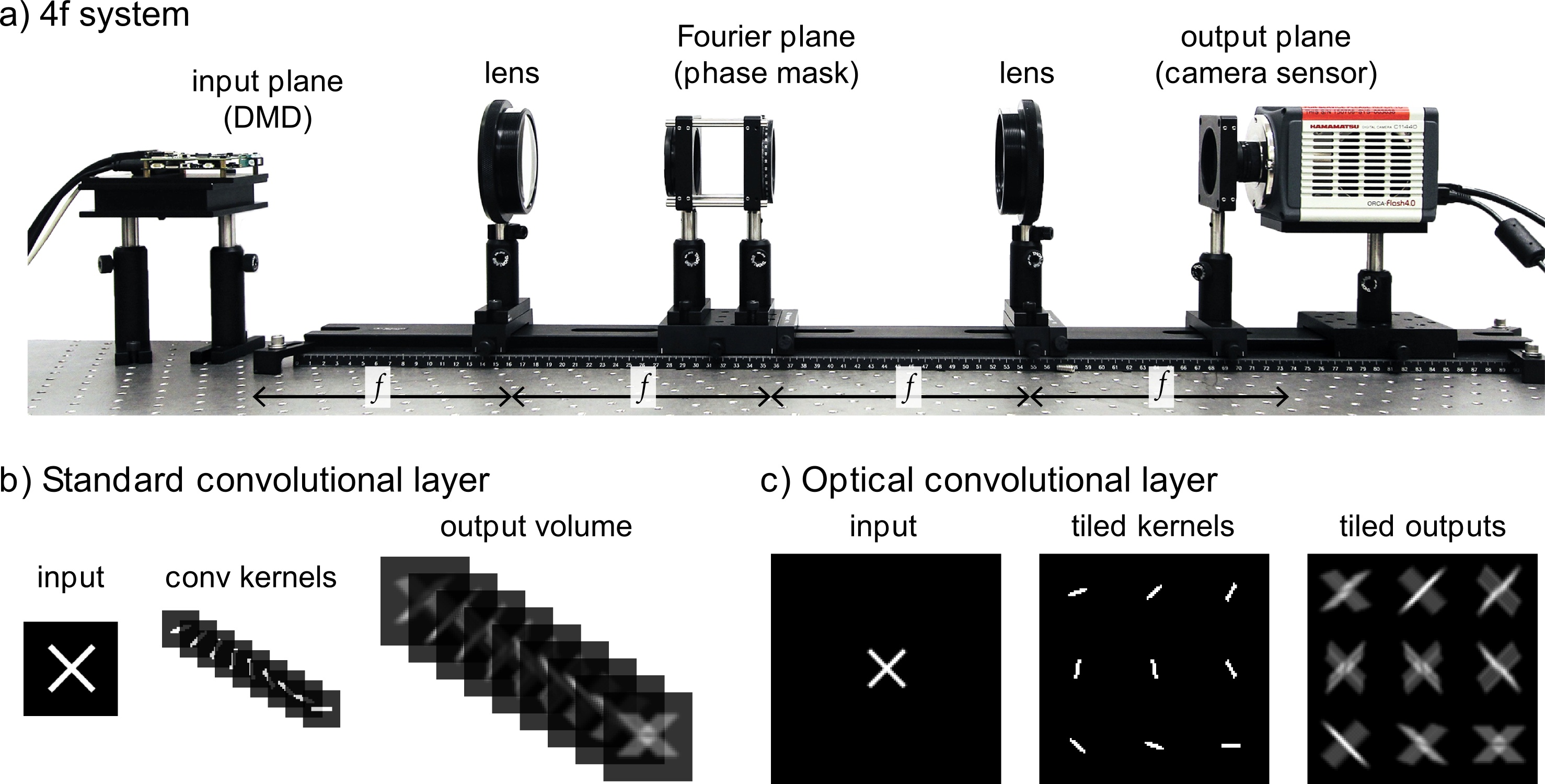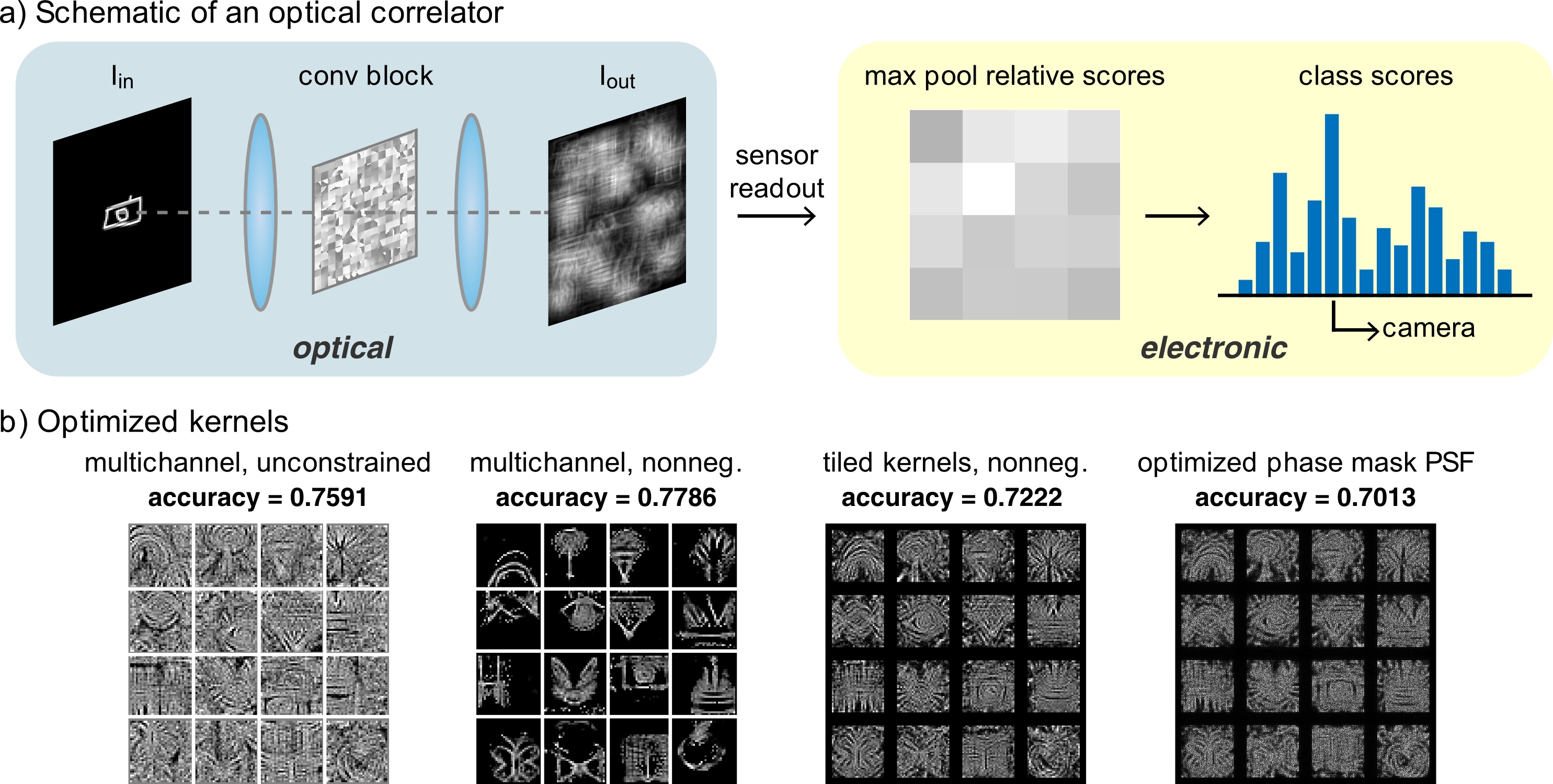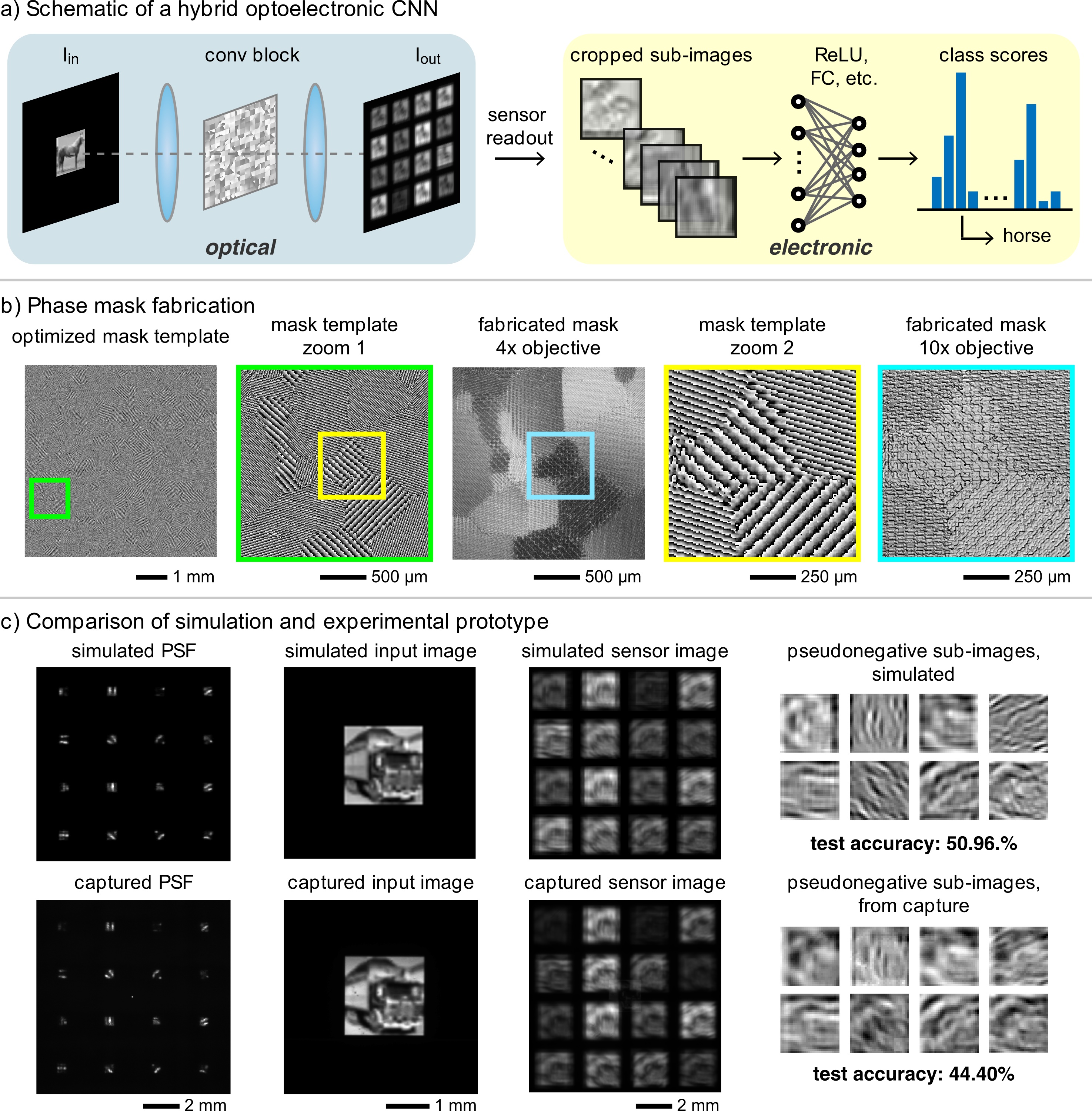ABSTRACT
Convolutional neural networks (CNNs) excel in a wide variety of computer vision applications, but their high performance also comes at a high computational cost. Despite efforts to increase efficiency both algorithmically and with specialized hardware, it remains difficult to deploy CNNs in embedded systems due to tight power budgets. Here we explore a complementary strategy that incorporates a layer of optical computing prior to electronic computing, improving performance on image classification tasks while adding minimal electronic computational cost or processing time. We propose a design for an optical convolutional layer based on an optimized diffractive optical element and test our design in two simulations: a learned optical correlator and an optoelectronic two-layer CNN. We demonstrate in simulation and with an optical prototype that the classification accuracies of our optical systems rival those of the analogous electronic implementations, while providing substantial savings on computational cost.
CITATION
J. Chang, V. Sitzmann, X. Dun, W. Heidrich, G. Wetzstein. “Hybrid optical-electronic convolutional neural networks with optimized diffractive optics for image classification”, Scientific Reports, 2018.
BibTeX
@article{chang:2018:HybridCNN,
author = {Julie Chang and Vincent Sitzmann and Xiong Dun and Wolfgang Heidrich and Gordon Wetzstein},
title = {Hybrid optical-electronic convolutional neural networks with optimized diffractive optics for image classification},
journal = {Scientific Reports},
year = {2018},
}
Acknowledgements
The authors would like to thank Evan Peng for recommending and coordinating fabrication options for the phase mask. The authors also recognize Kevin Ting for rapid prototyping of the rotation mount and Matthew O’Toole, Donald Dansereau, and Joseph Goodman for valuable discussions. This project was generously supported a Sloan Research Fellowship and an NSF CAREER award (IIS 1553333).
Related Projects
You may also be interested in related projects, where we apply the idea of Deep Optics, i.e. end-to-end optimization of optics and image processing, to other applications, like monocular depth estimation, 3D object detection, image classification, extended depth-of-field imaging, superresolution imaging, or optical computing.
- Chang and Wetzstein. 2019. Deep Optics for Monocular Depth Estimation and 3D Object Detection. arXiv (link)
- Sitzmann et al. 2018. End-to-end Optimization of Optics and Imaging Processing for Achromatic Extended Depth-of-field and Super-resolution Imaging. ACM SIGGRAPH 2018 (link)

